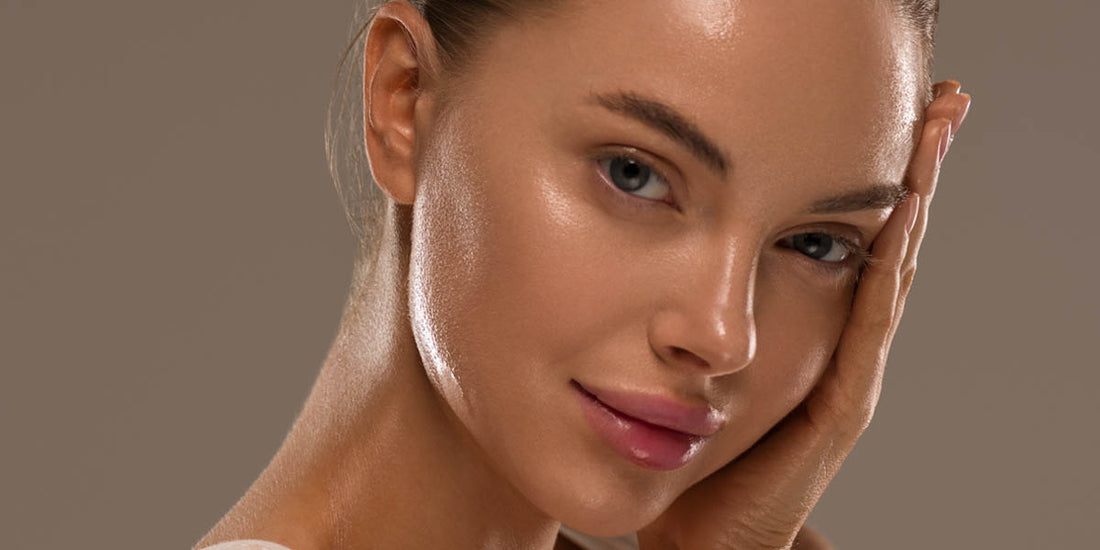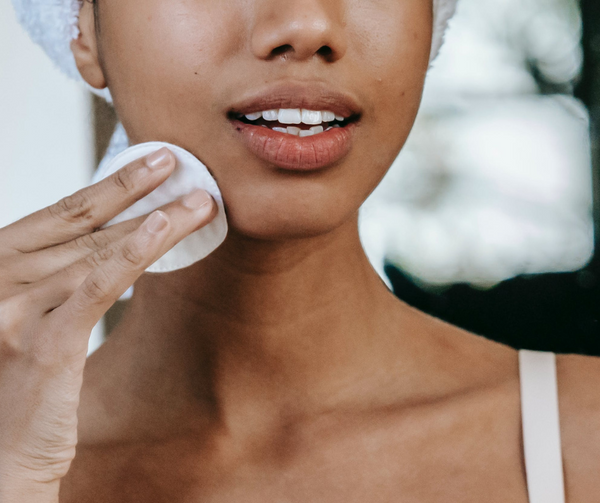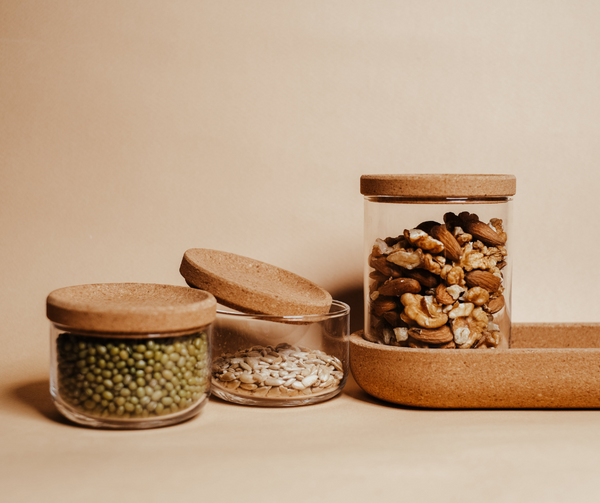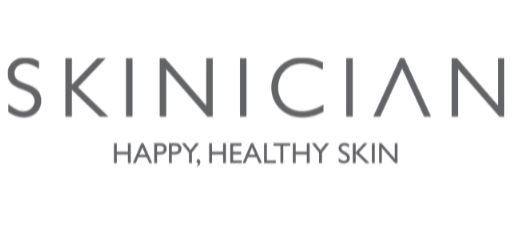
What is Sebum and How to Control Overproduction
Share
In this comprehensive guide, learn what triggers sebum overproduction and how it manifests. Discover skincare, diet, and lifestyle strategies to get overactive oil glands under control. Plus, find targeted product recommendations and professional treatment options for severe cases.
What is Sebum?
Sebum is an oily, waxy substance that is produced by the sebaceous glands in our skin. It is made up of lipids including triglycerides, wax esters, squalene, and cholesterol. Sebum is secreted onto the skin's surface through the hair follicles.
It is a natural moisturiser that helps keep our skin soft, supple, and hydrated. Sebum also provides a protective barrier on the skin's surface that helps guard against infection and environmental damage.
The Role of Sebum in Skin Health
Sebum plays several important roles in maintaining the health of our skin:
- It acts as a natural moisturiser by trapping water in the skin and preventing it from evaporating. This helps keep the skin hydrated.
- It has antimicrobial properties that help prevent the growth of bacteria on the skin's surface. This helps prevent infections.
- It forms a protective barrier on the skin that helps shield it from environmental damage caused by sun exposure, pollution, chemicals, etc.
- It contains antioxidants like vitamin E that help neutralise free radicals and protect the skin from oxidative damage.
- It helps regulate the skin's pH balance
The Anatomy of Sebaceous Glands
Sebaceous glands are microscopic glands located in the dermis (middle) layer of our skin. These glands are made up of special sebum-producing cells called sebocytes. These cells synthesize and store sebum inside the glands as lipid droplets.
Sebaceous glands are found over the entire body except for the palms of the hands and soles of the feet. The major areas where they are concentrated include the face, neck, chest, back, and scalp.
Hormonal Influences on Sebum Production
Sebum production is closely tied to hormone levels in the body. Hormones such as testosterone stimulate the sebaceous glands and cause them to increase in size and ramp up sebum secretion.
During puberty, rising testosterone levels lead to a surge in sebum production. This stimulatory effect of androgens is why excess sebum and acne flare-ups often start during the teen years.
On the flip side, oestrogen limits sebaceous gland activity and curbs sebum production. This explains why women generally produce less sebum compared to men. After menopause when oestrogen levels drop, sebum production may increase in some women.

Genetic Factors Affecting Sebum Production
Genetic factors play an important role in determining individual sebum production rates. People with a family history of excessive sebum or acne problems are more likely to overproduce sebum themselves.
Certain genetics can also affect the sebaceous glands by making them oversensitive to normal levels of testosterone which can result in increased oil production.
Recognising Signs of Sebum Overproduction
The most tell tale sign of sebum overproduction is an oily shine across your forehead, nose and chin. These three areas make up an area called your "t-zone". You may also experience enlarged pores, whiteheads or blackheads on your t-zone. These are signs of congestion caused by excess oil production.
Other parts of the face may also develop acne and small bumps (called comedones.) This is due to the excess sebum mixing with dead skin cells and clogging hair follicles. Thick sebum plugs may be extractable from pores during facials or while cleansing.
Keeping a close eye on your skin will help identify issues with excess sebum production early so you can take action before things get worse.
Summary of the most common indicators:
- Oily skin with a persistent greasy shine, especially on the forehead, nose, and chin region.
- Enlarged and congested pores around the nose, cheeks, and forehead areas.
- Frequent acne breakouts, blackheads, and whiteheads.
Managing Sebum Overproduction: Skincare Routines to Control Sebum

Our skincare routine can be tailored to help control excess sebum secretion. Cleansing the skin properly is the first step to removing excess oil. Opt for a gentle cleanser that will cleanse without stripping the skin. Using a cleanser twice daily helps clear away grease and allows other products to penetrate better. However, avoid over-cleansing more than twice a day as this can trigger sebaceous glands to overcompensate.
Exfoliation is also key to preventing dead skin cell build-up that can clog pores along with sebum. By using a facial exfoliator two to three times per week, you will remove the build-up of dead skin cells that can block pores and cause breakouts. Regular facials in a salon can also be used for powerful exfoliation. Look for facials that use beta hydroxy acid (BHA) to dissolve sebum build-up inside pores and enhance cell turnover.
When choosing a moisturiser, go for an oil-free, non-comedogenic formula that hydrates oily skin without clogging pores further. Choose moisturisers with ingredients such as Zinc PCA to regulate sebum production and mattify your skin. Retinoids also help curb excess sebum while tackling acne.
Using targeted masks periodically helps manage specific issues like enlarged pores or acne. Clay masks are ideal for absorbing excess sebum; apply to oily areas and leave on for 10-15 minutes once or twice a week.
Always remember to remove makeup thoroughly before bedtime to avoid clogged pores. Oil cleansers efficiently get rid of even waterproof makeup. Building these skin-friendly practices into your routine helps control overactive sebaceous glands.
Key tip takeaways:
- Use a gentle cleanser twice daily to remove excess oil without overdrying skin. Avoid harsh scrubs.
- Exfoliate regularly to unclog pores and normalize the shedding of dead skin cells.
- Look for oil-free and non-comedogenic moisturisers that hydrate without clogging pores.
- Incorporate Zinc PCA and retinoids to help regulate sebum production. They also tackle acne.
- Use clay masks weekly to soak up excess sebum and tighten enlarged pores. Green Clay works well.
- Always remove makeup thoroughly before bedtime to prevent clogged pores. Oil cleansers are great for this.

Dietary Modifications to Reduce Sebum
Our diet affects many aspects of skin health, including sebum production. Increasing the intake of healthy fats like omega-3s found in fish, nuts, and seeds can help reduce inflammation that worsens acne. Omega-3s also limit the overactivity of sebaceous glands.
Foods rich in zinc like oysters, nuts, legumes, and whole grains help control excess sebum production as well.
Staying hydrated is equally important to keep sebaceous glands functioning optimally. Drink sufficient water throughout the day. Dehydration conversely can stimulate oil glands. It’s also best to limit dairy intake as the hormones present may exacerbate sebum production. For the same reason, also minimise alcohol which can be inflammatory.
A diet lower in high glycemic foods may also be beneficial. Cutting down on refined carbohydrates, sugary foods, fruit juices, and sodas can help stabilise blood sugar and insulin. This in turn reduces stimulation of sebaceous glands.
Stress Management and Lifestyle Choices
Our modern lifestyles subject the body to constant stress, which can aggravate issues like acne and oily skin. Finding healthy ways to manage stress is key to controlling sebum production.
Regular exercise helps lower stress levels while releasing endorphins that improve mood. Just avoid heavy workouts that cause excessive sweating, which can clog pores.
Restful sleep is equally important, as lack of sleep disrupts hormone balance and increases inflammation. Aim for 7-8 hours of overnight sleep, going to bed early if needed.
Relaxation techniques like yoga, meditation, and deep breathing lower stress hormone levels throughout the day. Getting a therapeutic massage periodically can also lower cortisol and relieve tense muscles. Avoid smoking or excessive alcohol consumption, as these can worsen sebum production.
Staying hydrated by drinking sufficient water is vital for keeping skin in optimal condition. For those with desk jobs, take regular breaks to move around during work hours to manage stress. With some lifestyle adjustments, it’s possible to curb stress-related sebum triggers.
Manage Sebum Overproduction with Skinician
SKINICIAN products boast multifunctional qualities designed to address various skin concerns and deliver effective results. Explore our standout products specifically crafted for oily skin below, aimed at effectively managing excess sebum production:
The perfect first step in your cleansing routine is our Make-up Melting Cleansing Balm which is rich in ingredients such as avocado oil to help melt away your make-up, impurities, and excess oils without stripping your skin in the process.
A double cleansing routine is essential for clean, healthy skin. For your second cleanse, use the refreshing Purifying Cleansing Gel which is tailored for oily skin. This refreshing gel eliminates excess oil and pore-clogging impurities that may contribute to breakouts.
After cleansing and toning, spritz SKINICIAN Revitalising Purifying Toner across the skin. This refreshing spray toner is expertly crafted to leave your skin clear and matte. Its secret weapon, zinc PCA, regulates oil production, ensuring a shine-free complexion.
Finish your routine with SKINICIAN Purifying Day Moisturiser with SPF 30 that is designed for blemish-prone skin. Infused with zinc PCA and a mattifying complex, it reduces breakouts and regulates sebum production.
Two to three times per week, incorporate the Purifying Green Clay Mask for a deep cleanse that fights breakouts. With a host of key ingredients to help draw out excess oil, it purifies the skin and refines pores to leave the skin looking clear and refreshed.
Here are a few more articles you might be interested in:

